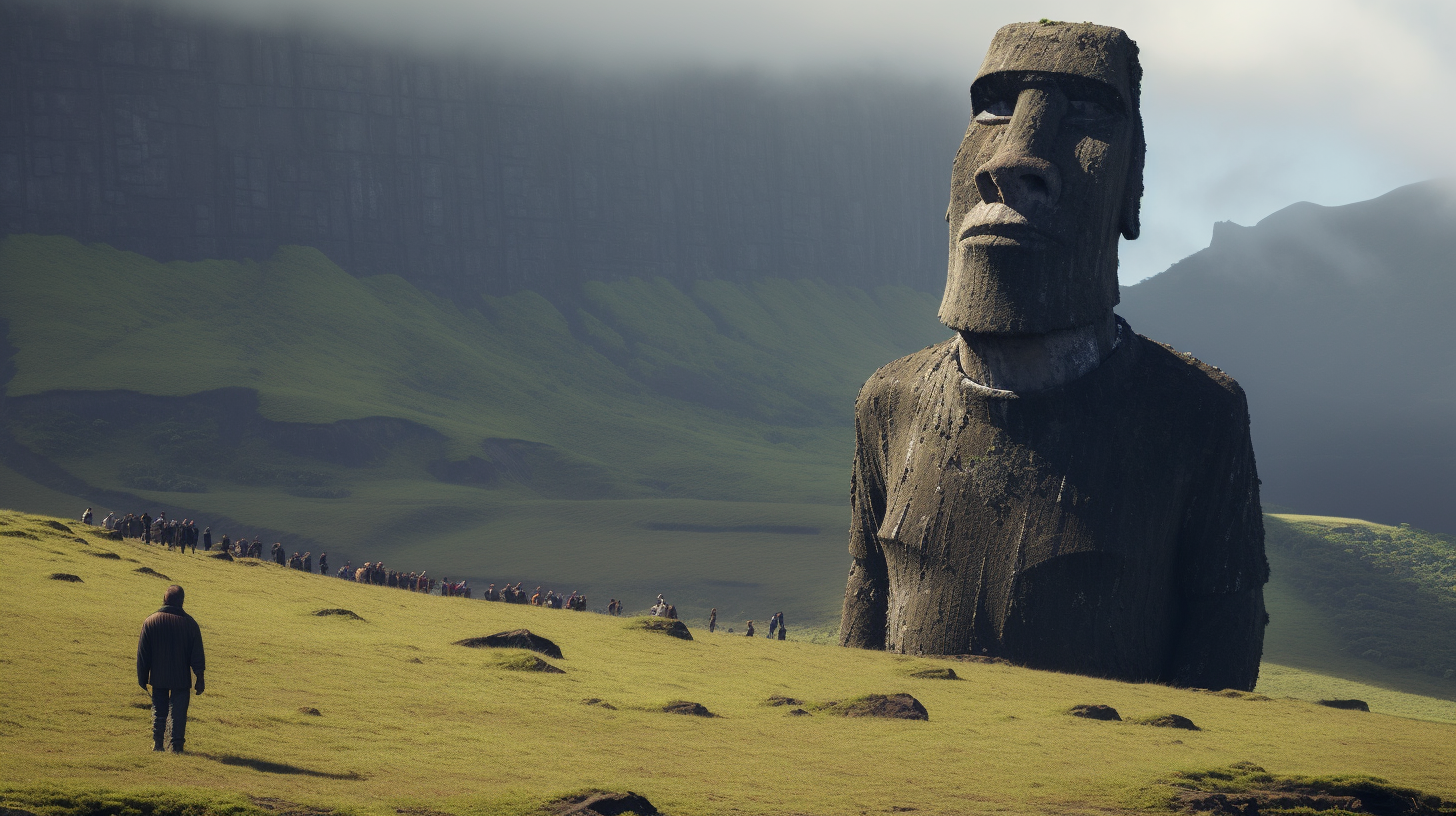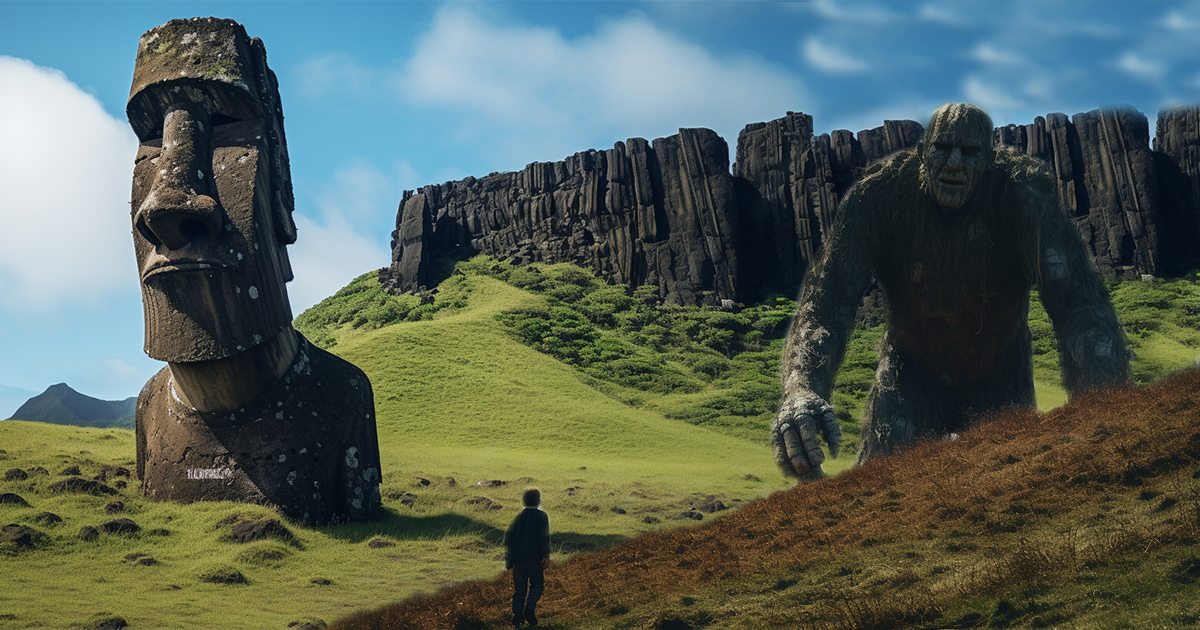Deep within the Southeast Pacific Ocean lies a place veiled in enigma and seclusion – Rapa Nui, famously known as Easter Island. Positioned more than 1,100 miles away from its nearest inhabited neighbor and over 2,000 miles from mainland Chile, Easter Island has become a subject of wonder for explorers, historians, and proponents of ancient astronaut theories alike.
What distinguishes this distant island from the rest of the world are the nearly 300 colossal stone sculptures called the moai. These gigantic statues, predominantly facing away from the ocean, have captivated scholars for generations.
Ranging from 15 to 70 feet in height and weighing an astonishing 165 tons, the creation of these monumental figures raises a fundamental question: what motivated the inhabitants of Easter Island to undertake such monumental construction?
The present-day Rapa Nui people, the island’s locals, attribute the building of the moai to the reverence of significant ancestral ariki or leaders.

Nonetheless, some proponents of ancient astronaut theories have presented an unconventional hypothesis – proposing that the moai might have been erected by an ancient race of giants who once inhabited the island.
Enigmatic reports from C.F. Barons, a member of the Dutch expedition that first encountered Easter Island in 1722, inject a layer of mystery into this notion.
Barons depicted some of the island’s priestly class as giants, detailing encounters with individuals towering around 15 feet tall.
Adding complexity to the island’s history are the distinctions between the two groups of Easter Island inhabitants: known as the short ears and the long ears. The long ears, often identified as giants, constituted a distinct group from their short-eared counterparts.
Characterized by their elongated earlobes, the long ears formed the priestly elite who supervised the creation and transport of the statues across the island.
The immense scale of the megaliths on Easter Island has prompted speculation that they could have been crafted by giants. This notion resonates with myths from various regions, hinting at a linkage between megalithic sites and ancient giants.

Nevertheless, a veil of ambiguity envelops the island’s chronicles. Despite sustaining a populace of up to 15,000 individuals before being discovered by the West, Easter Island experienced a rapid decline.
Mere 52 years following James Cook’s exploration, the island’s moai sculptures lay in ruin, and the population dwindled to a mere 700 survivors.
What triggered such a drastic decline? Curiously, historical records from that era make no mention of giants, introducing a tantalizing void in our comprehension of the island’s past.
Some proponents of ancient astronaut theories introduce a compelling conjecture concerning the disappearance of Easter Island’s populace. Archaeological findings unveil abandoned and incomplete moai statues in quarries alongside scattered tools. It remains a puzzle why the construction abruptly ceased and the fate of the giant priestly class overseeing the projects.
Could it be that Easter Island played host to genetic experiments conducted by unearthly beings, as suggested by some theorists? They propose that remote sites like islands, lofty mountains, and promontories were selected to prevent interference or contamination of these experiments.
Video:
While these conjectures may be intriguing, the genuine tale of Easter Island remains elusive. The stoic moai statues persist as silent overseers of a past entwined with mysteries. Though we may never unravel all the enigmas of this cryptic island, the allure of Easter Island and its enigmatic history will undoubtedly captivate the human mind for years to come.
